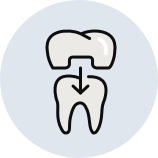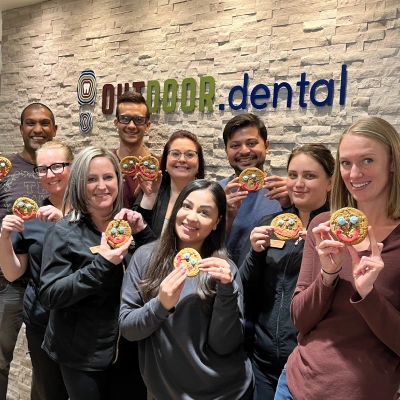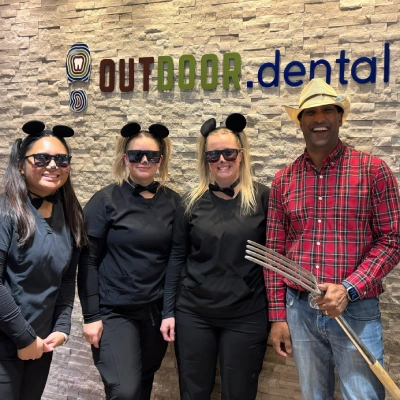Cavities are a lot more common than you might think. Also known as dental caries or tooth decay, a cavity can quickly lead to significant problems in a tooth—especially if you ignore the issue. So if you have a cavity, what do you do? Can cavities be reversed?
If caught early enough, cavities can be reversed to a certain extent. However, if they progress deep enough into a tooth, the damage is permanent. If you suspect you have a cavity, visit your dentist as soon as you can to discuss treatment; this is crucial to preserving your tooth.
What Is a Cavity?
Your teeth are made up of 3 layers. There’s the innermost pulp, which contains the nerves and blood vessels; the soft middle dentin that acts as a cushion; and the outermost, hardest layer called enamel.
The enamel protects the inner, more sensitive parts of the teeth from damage. Think of it like a shield for the more vulnerable areas; it stops bacteria and acid from reaching the deeper layers of your teeth. So, what happens when this protective layer is compromised?
That’s where cavities come in. When bacteria in your mouth feed on sugars and starches from food, they produce acids that can wear down the enamel over time. Sometimes, this results in small holes, gaps, or openings in the enamel. There, the bacteria can gather and multiply further, worsening the problem.
How Can You Recognize a Cavity?
In some cases, cavities can reach those sensitive areas in the teeth. This can quickly lead to inflammation, infection, pain, and more. This decay can cause significant problems in the mouth if you leave them unaddressed. This is why it’s so essential to learn to recognize a cavity; this way, you can talk to your dentist about treatment.
Cavities often develop slowly. You may not even know you have one until you start experiencing sudden pains in your teeth. It helps to regularly check your teeth in the mirror if you’re worried about cavities.
The common signs of a cavity include:
- Tooth sensitivity
- Pain when biting down
- Visible pits or holes on the teeth
- Dark spots or discoloration
If you experience any of these symptoms, it’s important to visit your dentist for an examination. Cavities aren’t just a minor discomfort; they can quickly lead to further problems throughout your mouth.
Once the bacteria reach far enough into the tooth, they can start to affect the other layers, causing severe pain, infections, and even tooth loss. This is why it’s crucial to address cavities as soon as possible.
Are Cavities Permanent?
There is good news! With early intervention, cavities can easily be treated. In the earlier stages—before the actual gap develops—the plaque causing the problems can be swiftly removed during a dental cleaning. Then, the natural healing process can begin; your teeth can remineralize the enamel to a certain extent. With proper care and cleaning, you can have a smooth recovery.
However, this isn’t always the case. Enamel isn’t always repairable—especially if the bacteria reach deep enough. Once you have a physical gap or a hole in the enamel, it’s permanent damage; it can’t be repaired naturally.
However, this doesn’t mean all hope is lost! If you think you have a cavity, or are noticing any of the symptoms of one, it’s time to visit your dentist.
How Are Cavities Treated?
Treatment for cavities depends on the extent of the damage. There are several approaches depending on the severity of your tooth decay.
In the earliest stages, your dentist can clean the plaque causing the initial damage, and apply a fluoride treatment to protect your teeth. This helps to remineralize and strengthen the enamel, which can potentially reverse the initial stages of tooth decay.
However, if there is any physical damage or gaps in the enamel, you may need more advanced treatment.
Fillings
If the cavity has progressed beyond the initial stages, a filling is often necessary. To perform this procedure, the dentist will remove the decayed portion of the tooth and fill the gap with a special material.
This helps restore the integrity and functionality of your tooth while preventing further damage to the enamel.
Crowns
For more severe cases where a significant portion of the tooth is damaged, a dental crown may be necessary. This is a custom-fitted cap that covers the entire tooth, restoring its shape, size, and function.
During the procedure, the dentist will remove the decayed area and shape the remaining part of the tooth to fit the crown. This offers a more comprehensive solution, providing added strength and protection to the affected tooth.
Root Canals
If the cavity is so deep that it affects the innermost pulp of the tooth, a root canal may be required. This procedure involves removing the infected pulp, cleaning the cavity, and sealing it with a special material.
After a root canal, a crown is usually placed on the tooth to restore its structure and strength. Root canals are crucial to saving teeth that would otherwise need to be extracted entirely.
Extractions
In cases where the tooth is too damaged to save, a tooth extraction may be the only option. This procedure involves the removal of the affected tooth. Although this is generally a last resort, it’s sometimes necessary to prevent the spread of infection and maintain oral health.
How Your Dentist Can Help
Cavities are a common dental issue, but with the right knowledge and care, they can be prevented and treated effectively. If you think you’re dealing with a cavity or have any dental-related questions, reach out to our team here at Outdoor Dental! Take charge of your oral health and book an appointment with us today—this way, you can prevent problems like cavities in the future.























